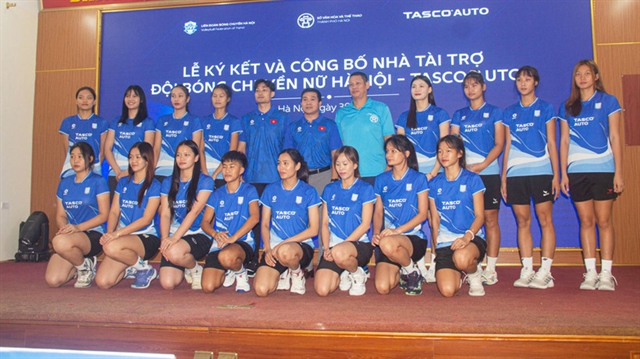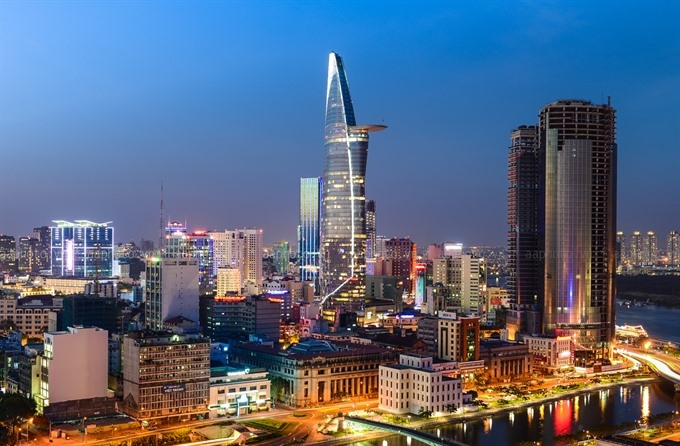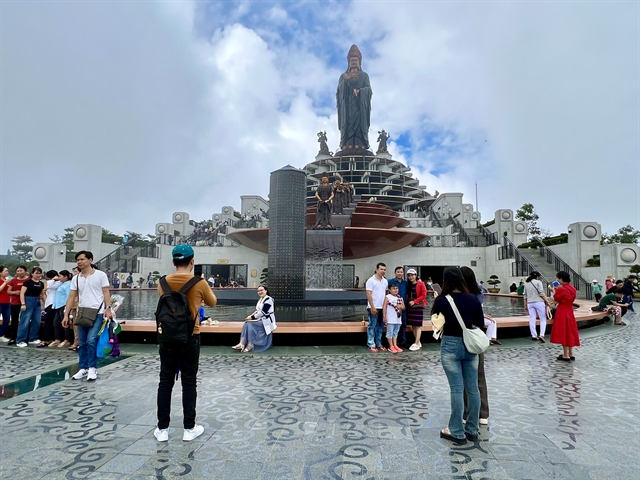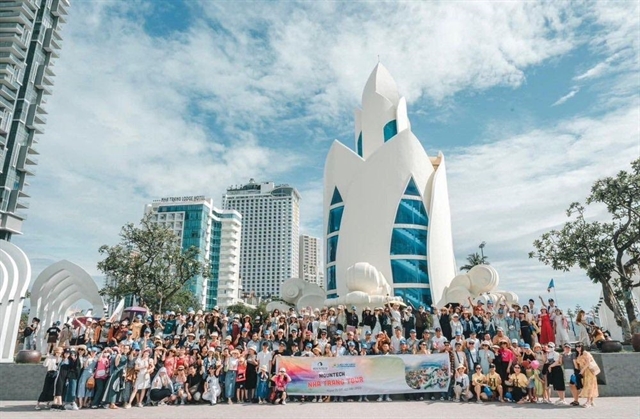 Society
Society

HCM City has great potential for smart-city development but lags far behind other Asian smart cities, according to a study issued by the HCM City-based University of Economics.
 |
| A view of HCM City at night. HCM City has great potential for smart city development but still lags behind other cities in the region. VNS File Photo |
HCM CITY — HCM City has great potential for smart-city development but lags far behind other Asian smart cities, according to a study issued by the HCM City-based University of Economics.
Nguyễn Trọng Hoài, vice president of the university, said that city authorities faced major challenges to develop smart-city initiatives.
Speaking at a recent HCM City Economic Forum, he said the challenges included rapid urbanisation, traffic congestion, pollution and increased population, as well as poor managerial coordination of electricity, water and transport infrastructure.
“To overcome these challenges, a smart-city model with infrastructure managed by smart people and smart technology is essential,” Hoài said.
The university study notes that a smart city “uses high technology in management, which connects information systems and synchronises infrastructure planning”.
Nguyễn Thiện Nhân, secretary of the HCM City Party Committee, said it was important to improve research activities to enable creative development, and strengthen connections between universities, research institutes and enterprises.
Smart-city studies address six main areas: smart governance, economy, mobility, environment, people and living.
The university study recommends that HCM City focus on economic growth, environmental protection, improvement of people’s living standards, and promotion of creativity.
Nguyễn Thành Phong, chairman of the city’s People’s Committee, said the city was implementing a project to become a smart urban area by 2020.
Under the plan, the city’s eastern area, including districts 2, 9 and Thủ Đức, would be developed into an innovative hub based on a digital- and knowledge-based economy.
The city already has a high percentage of information and communications technology penetration. As of September last year, it was estimated there were 1.27 mobile phones per capita and nearly 70 wireless-broadband subscribers out of 100.
To improve the quality and use of online information and governmental services, the city has built a rating system to receive feedback from citizens and enterprises, which has helped increase the number of users.
HCM City has also worked with a number of partners to learn from their experiences, including the Việt Nam Posts and Telecommunications Group, Viettel Group, the World Bank, Intel Products Việt Nam, Arizona State University, the US Trade and Development Agency, and the ASEAN Smart Cities Network.
However, compared to other smart cities in Asia, the roadmap for smart city development in HCM City still faces problems such as slow implementation and ineffective policies or projects.
In addition, the city has a limited amount of investment finance and qualified human resources.
Recommendations
Experts have recommended that HCM City work with governmental and non-governmental organisations in and outside the country to build on the success of smart-city models around the world in terms of policy, technology, revenue and human resources.
In addition, innovation will be key to smart city development in HCM City.
Huỳnh Thành Đạt, director of HCM City National University, said that so-called “innovation districts” would include a high density of creative and startup activities.
Experience from other countries shows that innovation districts are associated with research universities, which supply entrepreneurs, subjects for innovation, and startup activities, according to Đạt.
However, building an innovation district should be viewed as only a “roadmap” rather than a specific destination.
Models from developed countries like the US, Japan, and the EU, and economies such as South Korea, Singapore and Taiwan, all show that relationships between the state, enterprises, scientists and investors should be promoted for smart-city development.
Jay Wadhwani, chief operating officer of Mitsubishi Heavy Industries Asia Pacific, said to improve the innovation capacity of enterprises, it was important to think of solutions for sustainable growth.
“With the region urbanising at an unprecedented rate, changes in consumption are helping to drive rapid growth. Both the public and private sectors need to ensure that this growth takes place in an environmentally sustainable way,” he said.
"Sustainable growth also requires an appropriate standard of living, including solutions for traffic and waste management, such as waste-to-energy systems," he added.
Philippe Leonard, executive director of Smart Cities Council of Europe, said: “A smart city is not a technological issue. It’s about using technology to make a city smarter. A smart city improves the quality of life. Smart cities have residents who embrace creativity, an inclusive society and advanced education.”
“Such cities also include smart mobility (clean and non-motorised options), smart economy (innovative entrepreneurship), smart Government (application of ICT and e-Government) and smart living (green planning and building, and green energy),” he said.
The case study of HCM City conducted by the HCM City University of Economics assessed the city’s capability of smart-city development based on an overview of research about smart city areas around the world. It also analysed and compared HCM City’s smart city development with southeastern provinces in Việt Nam and other smart cities in Asia. — VNS




